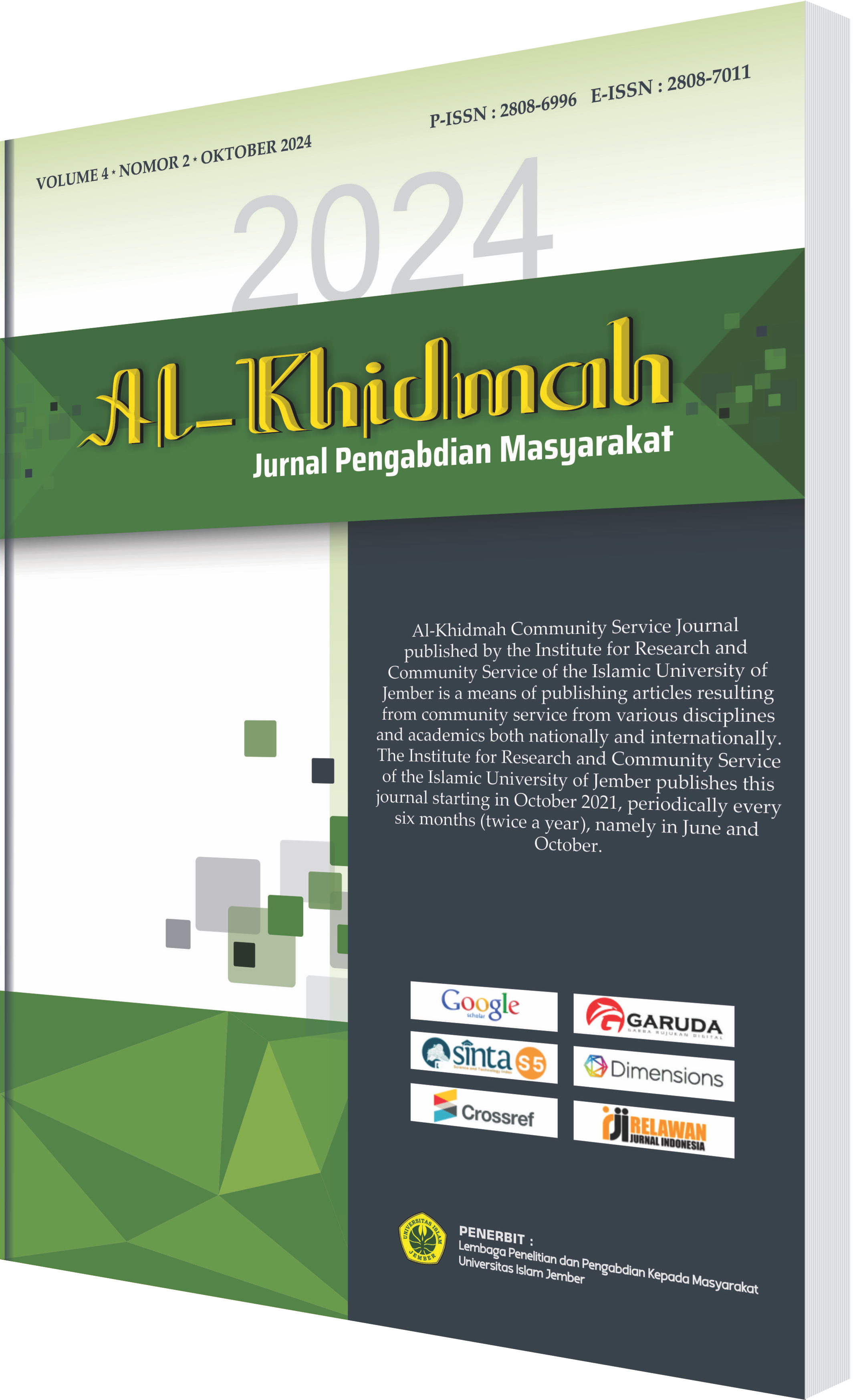Pendampingan GMAPS dan QRIS sebagai Media Digitalisasi UMKM Desa Tempurejo Kabupaten Jember
DOI:
https://doi.org/10.56013/jak.v4i2.3201Keywords:
Digitalization; Community Service; QRISAbstract
The digitalization era is an era where daily activities have been made easier with the help of technology. Through digitalization, human activities become easier and more practical, one of which is in increasing MSME income. This community service research has the following objectives: 1) Providing an understanding to the MSME community about the steps to register in Google Maps Business and the use of QRIS (QR Code Indonesian Standard) as a means of digitalizing increasing MSME income; 2) Carrying out assistance in the creation of Google Maps Business and QRIS MSME in Tempurejo Village as a medium for MSME digitalization; 3) Providing education to the MSME community in Tempurejo Village that digitalization can increase income, in line with the increasing insight of the MSME community regarding digital business. The community service research uses the ABCD (Asset Based Community Driven) method as its analysis tool. The results of the study in this community service show that there is an increase in knowledge, skills, and capacity of MSMEs in utilizing social media as a means of online promotion, the opportunity to increase the number of MSME sales is greater, the welfare and independence of MSMEs is increased, and cooperation and synergy between MSMEs, communities, village governments, and digital applications are increased in supporting MSME digitalization
Downloads
Published
How to Cite
Issue
Section
License
Copyright (c) 2024 Grace Simanjuntak, Siti Aisyah, Ayudya Rizqi

This work is licensed under a Creative Commons Attribution 4.0 International License.






